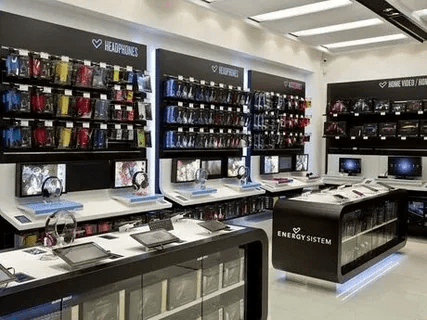UI (User Interface) and UX (User Experience) design are crucial components of modern digital products. They play a pivotal role in how users interact with applications, websites, and digital platforms. A well-designed UI/UX not only enhances user satisfaction but also improves business outcomes by increasing engagement, retention, and conversions.
This blog will explore the core principles of UI/UX design, its importance in digital products, the difference between UI and UX, best practices, and how to create seamless and delightful user experiences.
What is UI/UX Design?
UI/UX design encompasses two distinct but closely related disciplines:
1. User Interface (UI) Design
UI design focuses on the visual and interactive elements of a digital product. It involves creating interfaces that are aesthetically pleasing, intuitive, and easy to navigate. The goal is to ensure that users can interact with a product effortlessly.
Key elements of UI design include:
- Layout: Organizing information and elements in a structured manner.
- Typography: Choosing readable and visually appealing fonts.
- Colors: Selecting a color scheme that aligns with the brand identity and enhances usability.
- Icons and Buttons: Designing interactive elements that guide users through the product.
2. User Experience (UX) Design
UX design focuses on the overall experience a user has when interacting with a digital product. It involves understanding user behavior, needs, and pain points to create a seamless and enjoyable experience.
Key elements of UX design include:
- User Research: Understanding the target audience and their preferences.
- Information Architecture: Structuring content and features logically.
- Wireframing and Prototyping: Creating blueprints and interactive models of the product.
- Usability Testing: Gathering feedback to improve the product’s usability.
While UI design is about how a product looks, UX design is about how it works. Together, they form the foundation of successful digital products.
Why is UI/UX Design Important?
UI/UX design plays a critical role in the success of digital products for several reasons:
1. Improves User Satisfaction
A well-designed UI/UX enhances user satisfaction by making digital products easy to use and navigate. Users are more likely to engage with products that offer a seamless experience.
2. Increases User Retention
A positive user experience encourages users to return to a product. If users find value and enjoyment in their interactions, they are more likely to become loyal customers.
3. Boosts Conversions
UI/UX design directly impacts conversion rates. By optimizing user journeys and reducing friction, businesses can increase sign-ups, purchases, and other desired actions.
4. Reduces Development Costs
Investing in UI/UX design early in the development process helps identify usability issues before they become costly problems. It reduces the need for extensive redesigns and ensures that the final product meets user expectations.
5. Strengthens Brand Identity
A consistent and visually appealing UI/UX design reinforces brand identity. It helps businesses build trust and credibility with their users, which is essential for long-term success.
Principles of UI/UX Design
1. User-Centered Design
The user should be at the center of all design decisions. Understanding user needs, preferences, and pain points is essential to creating effective UI/UX designs.
2. Consistency
Consistency in design elements such as colors, typography, and icons creates a cohesive experience. It helps users navigate the product effortlessly and reduces cognitive load.
3. Accessibility
UI/UX design should be inclusive and accessible to all users, including those with disabilities. Considerations such as contrast ratios, keyboard navigation, and screen reader compatibility are essential.
4. Simplicity
Simplicity is key to effective UI/UX design. Avoid clutter and unnecessary elements. Focus on delivering the core functionality in a straightforward and intuitive manner.
5. Feedback
Providing feedback to users, such as confirmation messages, progress indicators, and error messages, improves the user experience by keeping users informed.
Best Practices for UI/UX Design
1. Conduct User Research
Understanding your target audience is the first step in creating effective UI/UX designs. Conduct surveys, interviews, and usability tests to gather insights.
2. Create Wireframes and Prototypes
Before diving into the final design, create wireframes and prototypes to visualize the product’s structure and functionality. This helps identify potential issues early.
3. Focus on Mobile-First Design
With the increasing use of mobile devices, it’s essential to design with a mobile-first approach. Ensure that your product is responsive and provides a seamless experience on all devices.
4. Prioritize Usability
Usability should be a top priority in UI/UX design. Ensure that users can achieve their goals efficiently and without confusion.
5. Test and Iterate
UI/UX design is an iterative process. Conduct usability tests, gather feedback, and make improvements based on user insights.
Common UI/UX Design Mistakes to Avoid
- Ignoring User Research
Skipping user research can lead to designs that don’t meet user needs.
- Overcomplicating the Design
Complex designs can confuse users. Keep it simple and intuitive.
- Inconsistent Design Elements
Inconsistencies in fonts, colors, and layouts can disrupt the user experience.
- Neglecting Accessibility
Ensure your design is accessible to all users, including those with disabilities.
- Failing to Test
Without usability testing, you may miss critical issues that impact the user experience.
Conclusion
UI/UX design is essential for creating digital products that are both functional and delightful to use. By understanding the principles of UI/UX design, conducting user research, and following best practices, businesses can create exceptional user experiences that drive engagement, retention, and conversions. Remember that UI/UX design is an ongoing process that requires continuous testing and iteration to meet evolving user needs. Investing in UI/UX design not only enhances user satisfaction but also contributes to the long-term success of digital products.
Devoq Design is a premier UI/UX design agency offering expert design services in both UI/UX Design Agency in Nebraska and UI/UX Design Agency in Nevada .Known for creating user-centric digital experiences, Devoq Design specializes in crafting intuitive and visually appealing user interfaces for web and mobile applications. Their team of experienced designers focuses on understanding the unique needs of each client, delivering customized solutions that enhance usability and engagement. Whether you’re a startup looking to establish your brand or an enterprise aiming to improve your digital presence, Devoq Design provides cutting-edge UI/UX strategies to help businesses succeed in the competitive digital landscape.




































































































































































































































































































































































































































































































































































































































































































































































































































































































































































































